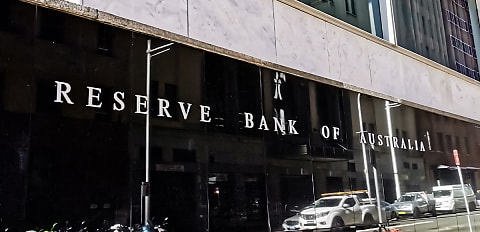The review was released in a speech from RBA assistant governor Christopher Kent. In the statement, Kent outlined the desired outcomes of the TFF, which were:
- Lower the cost of borrowing for businesses and households, by lowering lenders’ funding costs and reinforce the benefits to the economy of the lower cash rate
- Encourage banks to lend to businesses – particularly small and medium-sized enterprises (SMEs) – given that business credit tends to fall in downturns
This was achieved by providing lower cost funding to banks over a three-year period. These savings were reportedly passed on to borrowers, which the RBA said was its goal.
“Under the TFF, banks had access to cheap funding up to an amount that was based on the initial size and subsequent growth of their loan book. The interest rate was initially fixed at 0.25 per cent. This was lowered to 0.1 per cent in step with the reduction in the cash rate target in November 2020,” said Kent.
“A bank was able to secure additional TFF allowances if it increased its overall lending to businesses, particularly smaller businesses. For each dollar of additional credit extended to large businesses, a bank was eligible for another dollar of TFF funding. For each additional dollar extended to SMEs, a bank had five more dollars added to its TFF allowance.
“TFF funding was much cheaper than other sources of term funding. Unsurprisingly, banks took up most of their TFF allowances. The TFF ultimately provided $188 billion of funding, which was equivalent to 6 per cent of the stock of credit outstanding at the peak of the TFF’s use. Banks repaid all TFF funds as scheduled by mid-2024 without incident.”
According to the RBA, the share of TFF funds delivered was broken down as:
- Major banks ($133 billion)
- Midsized banks ($24 billion)
- Small banks ($9 billion)
- Foreign banks ($22 billion)
Kent said that the TFF delivered on its goals by passing on lower costs to borrowers: “Banks passed lower funding costs through to retail lending rates for both households and businesses, on both new and outstanding loans. On average, outstanding lending rates fell by almost 100 bps – a little more than the 84-bp decline in banks’ overall cost of funding.
“The fall in business rates was comparable across variable- and fixed-rate loans, with larger reductions for SMEs than was the case for larger businesses. But the fall in mortgage rates was much more pronounced for fixed-rate loans; the decline in fixed rates was also large relative to the reduction in the cash rate compared with earlier episodes of monetary policy easing. Banks’ decisions to provide fixed-rate mortgages at very attractive rates was consistent with the low fixed-rate TFF loans as well as banks choosing to focus their competitive efforts in the fixed-rate mortgage market,” he said.
Further to cost reductions, the RBA said that the TFF allowed for the better availability of credit. By encouraging demand, it reportedly allowed for lower rates.
“Indeed, business credit held up better during the pandemic than in the global financial crisis (GFC); such declines had also been evident in earlier downturns. Despite the supporting role of the TFF, total business credit may not have increased through 2020 and 2021 for several reasons, including a lack of business confidence and the reduced need for business credit given the sizeable government support to businesses’ cash flows,” Kent said.
“And despite the considerable incentives in the TFF to expand SME lending, staff estimates found no statistically significant effect on total SME lending compared with large businesses.”
The total cost of implementing the TFF was $9 billion, said the RBA. Around $4 billion of this cost was due to the decision to extend the TFF in early September 2020. The RBA has now considered the TFF in future after what it deemed a successful initiative.
“The TFF met the objectives we set out for it at the start of the pandemic. It helped prevent dire economic outcomes at a time when the outlook was bleak and highly uncertain, and there was limited scope for further cuts to the cash rate. The TFF contributed to materially lower lending rates for households and businesses by reducing funding costs directly for banks, and indirectly for other institutions that borrow from wholesale funding markets,” said Kent.
“It kept credit flowing to households and businesses at a time when banks might have otherwise curtailed lending. In helping to prevent a much more severe economic downturn, the TFF also contributed to stronger public sector balance sheets than otherwise.
“Would the RBA use a term-lending tool again in the future? The Board would consider such a tool in extreme circumstances when the cash rate target had been lowered to the full extent possible. But it would do so only after consideration of a wide range of scenarios and the associated risks, and with a broader range of operational options than were available at the time of the pandemic.”
[Related: RBA weighs out considerations for hike or cut]

